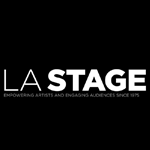 What if you had online access 24/7 to information on over half of the households in your region, including demographic, psychographic and buying trends? What changes might you make to your programs, to your marketing efforts or to your partnerships because you had access to such data? If you live in LA County, this scenario is a reality.
What if you had online access 24/7 to information on over half of the households in your region, including demographic, psychographic and buying trends? What changes might you make to your programs, to your marketing efforts or to your partnerships because you had access to such data? If you live in LA County, this scenario is a reality.
I recently sat down with Terence McFarland, CEO of LA Stage Alliance, to discuss the Arts Census project, a research project to better understand the region’s arts audience market. I was struck by two things: the wide diversity of the participating organizations and the way in which the project is repositioning the organization in the community. Strategically, the Arts Census is expanding the number of organizations LA Stage Alliance serves and helping those organizations deepen their connection to those they serve.
Beyond sharing the basics that we normally see in list trades, McFarland is looking to create and harness a growing data set for the good of the community. The community that benefits includes arts and culture leaders, who can access a broad but organized set of data that can help them make more informed strategic and tactical decisions, and the greater LA community, who benefits from programs that better understand and meet their needs and interests.
The Beginning
The idea began as a list share/trade in about 2000. Over the subsequent eight years, 100 organizations participated (only 25 or so in any given year), sharing transactional data about constituents such as subscribers and single ticket buyers. At most, the combined database contained minimal information on 350,000 households at any given time and reflected little organization crossover in terms of audience.
The Transformation
McFarland and his team flipped the model and came at it from a research approach. It was less about list trades and more about what could be learned about demographics and behaviors that would help inform strategic partnerships and marketing and communications initiatives within and across a wider range of organizations. In partnership with TRG Arts, a 24/7 data-sharing network was created. They greatly increased the number and range of organizations by making it free to participate.
The Results
The results are multi-dimensional. A complement to the California Cultural Data Project, the Arts Census data enables users to drill down into specifics about their audiences. All of the names are appended with demographic and psychographic data. Organizations can follow a patron’s engagement pattern throughout life, and this data informs changes to programs and services or collaboration decisions, for example choosing to work with others that share a similar customer base.
The Census now includes 200 nonprofit and for-profit organizations from a wide range of disciplines – dance, film/media, theatre, music, visual arts. Organizations participating in the Arts Census also span a vast range of budget sizes; for example, Collage Dance Theatre whose budget is around $250,000 to the LA County Museum of Art, at over $50 million. As the range and number of participating organizations grows, so does the size of the database: it now includes almost 4 million households. This translates to cleaner, more comprehensive information available to all the organizations.
For smaller budget organizations that have few staff, participation gives them access to a more comprehensive data set and the technical and management assistance to put the data to use – both in terms of easier access for “accidental administrators” and strategic marketing assistance from LA Stage Alliance staff. It serves the large organizations, too, which now “live in the system” as an extension of their own daily systems – broadening and deepening their data sets, and expanding their understanding of the community’s needs and interests.
Lessons for us all
The Arts Census proves that there is a way to collect, analyze and access quality data no matter what size our budgets. Access to that information allows us to work more efficiently and effectively as individual organizations, using our resources – people and money – to the greatest advantage. And, by working together, the communities in which we live or serve benefit from our increased abilities to meet their needs with fewer gaps in services and programs.
McFarland’s leadership shows us that opportunities to reposition and strengthen our organizations can come in many forms. Recognizing strategic initiatives for what they are helps us maximize our resources and better serve those we already know and care about, and increase our reach to and impact on new communities.
There are now over 20 regions around the US involved in efforts like this. In the following video, Terence McFarland discusses how LA Stage Alliance is using the Arts Census to help fulfill their mission of empowering artists and engaging audiences.

Leave a Reply